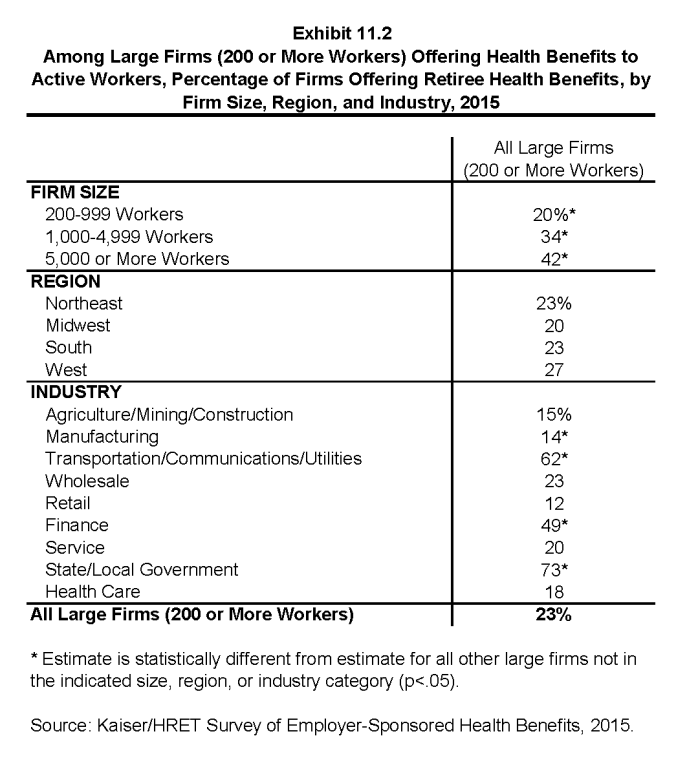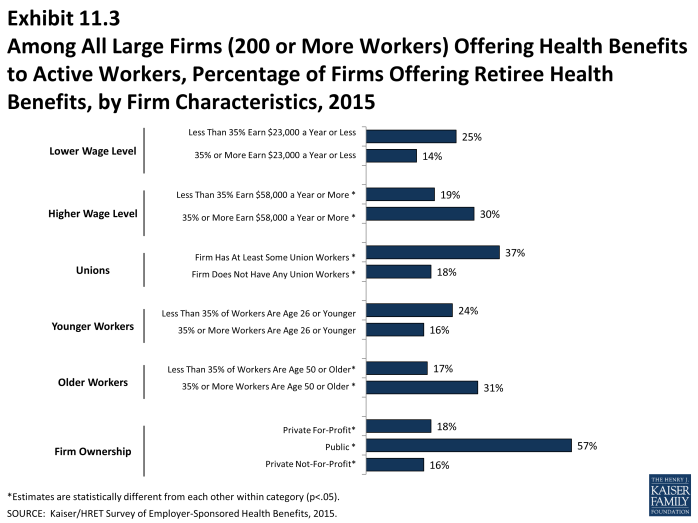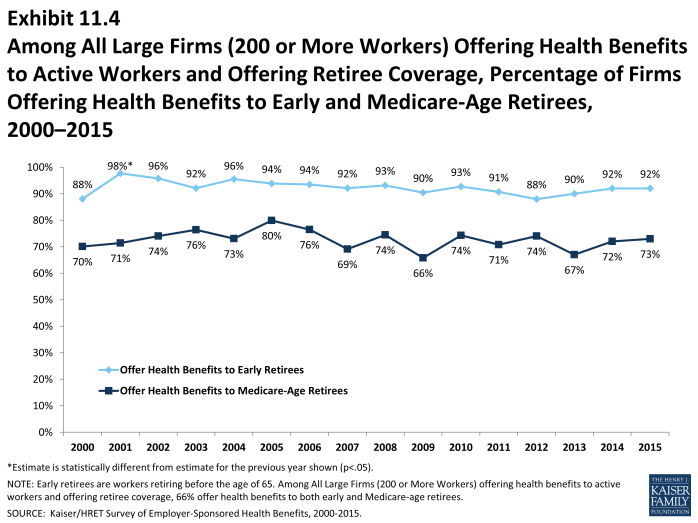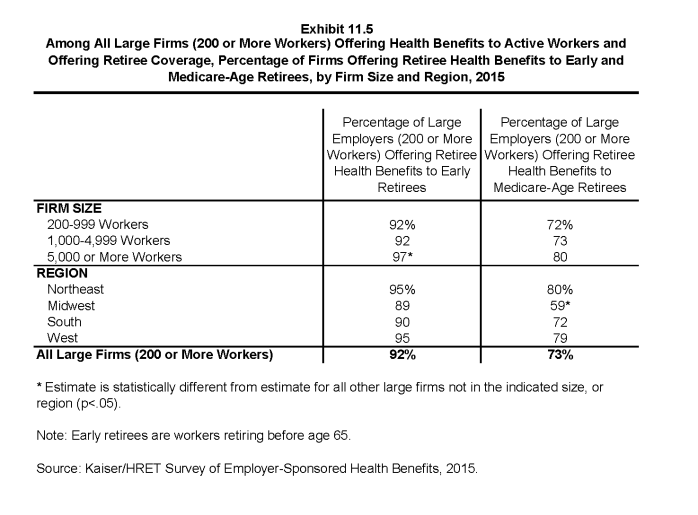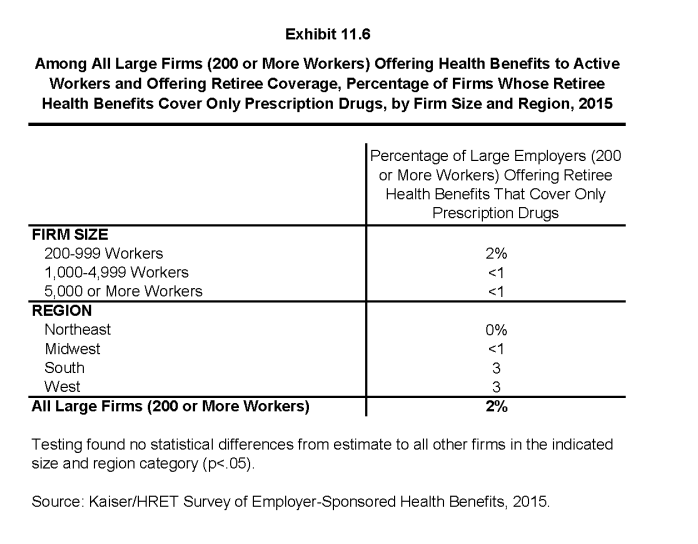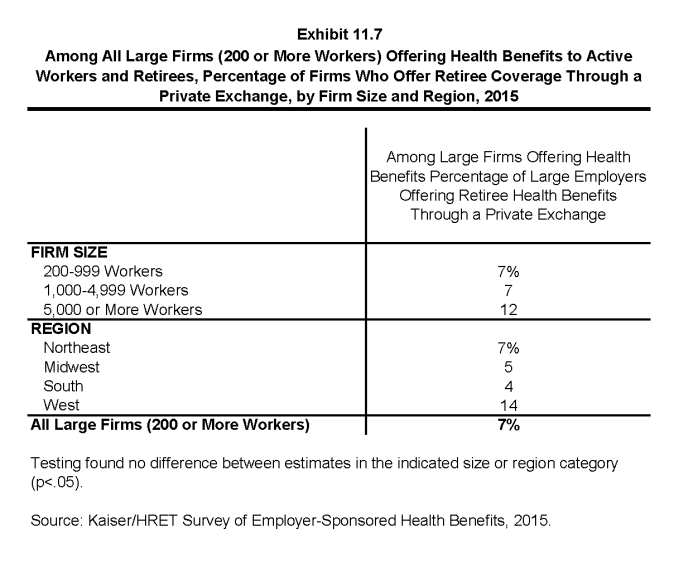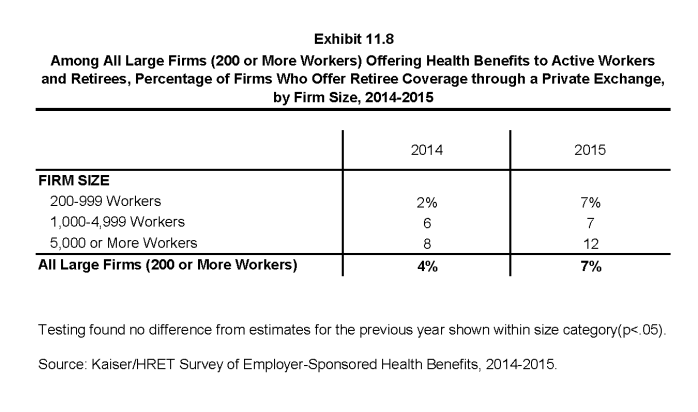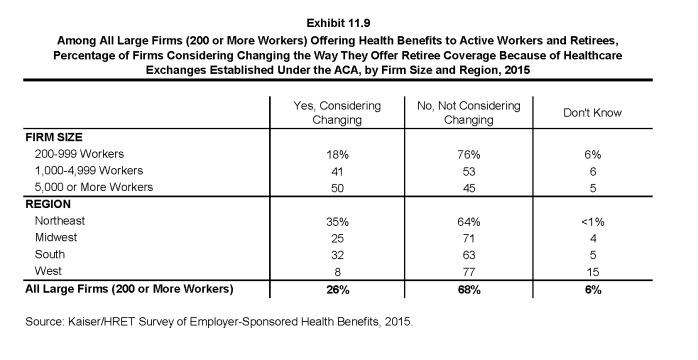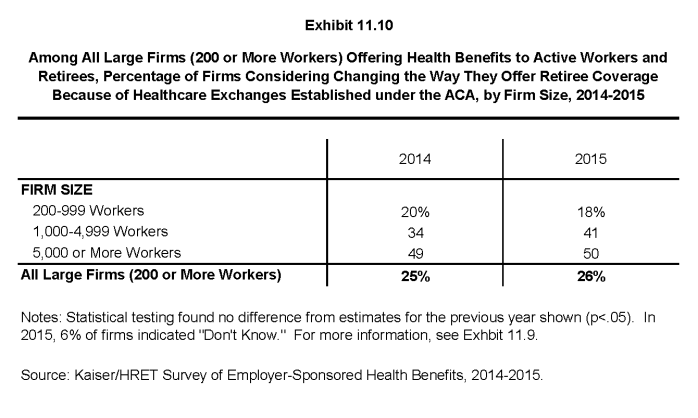2015 Employer Health Benefits Survey
Section Eleven: Retiree Health Benefits
Retiree health benefits are an important consideration for older workers making decisions about their retirement. Health benefits for retirees provide an important supplement to Medicare for retirees age 65 or older. Over time, the percentage of firms offering retiree coverage has decreased.
- Twenty-three percent of large firms (200 or more workers) that offer health benefits to their employees offer retiree coverage in 2015, similar to 25% in 2014. There has been a downward trend in the percentage of firms offering retirees coverage, from 34% in 2006 and 66% in 1988 (Exhibit 11.1).
- The offering of retiree health benefits varies considerably by firm characteristics.
- Very large firms (5,000 or more workers) are more likely to offer retiree health benefits than firms with 200-999 workers (42% vs. 20%) (Exhibit 11.2).
- Among large firms (200 or more workers), state and local governments (73%) are more likely than large firms in other industries to offer retiree health benefits. In contrast, large firms in the manufacturing industry are less likely (14%) to offer retiree health benefits when compared to large firms in other industries (Exhibit 11.2).
- Large firms with a larger share of older workers (35% or more of workers are age 50 or older) are more likely to offer retiree health benefits than large firms with fewer older workers (31% vs. 17%). Large firms with at least some union workers are more likely to offer retiree health benefits than large firms without any union workers (37% vs. 18%) (Exhibit 11.3).
- Large, public employers such as state or local governments are more likely to offer retiree benefits than large, private for-profit employers or private not-for-profit employers (57% vs. 18% and 16%, respectively) (Exhibit 11.3).
- Among all large firms (200 or more workers) offering retiree health benefits, most firms offer them to early retirees under the age of 65 (92%). A lower percentage (73%) of large firms offering retiree health benefits offer them to Medicare-age retirees. These percentages are similar to 2014 and have remained stable over time (Exhibit 11.4).
- Among all large firms (200 or more workers) offering retiree health benefits, 66% offer health benefits to both early and Medicare-age retirees.
- Among all large firms (200 or more workers) offering retiree health benefits, 2% offer coverage that covers only prescription drugs (Exhibit 11.6).
Private Exchanges and Public Exchanges
- Private exchanges have received considerable attention over the last several years. They are typically created by a consulting company, broker, or insurer, and are different then the public exchanges created under the Affordable Care Act (ACA). Private exchanges allow employees or retirees to choose from several health benefit options offered on the exchange. Seven percent of large employers offering retiree health benefits do so through a private exchange (Exhibit 11.7). For more information on the use of private exchanges for active employees, please see section 14.
- The percentage of large firms offering retiree health benefits providing them through a private exchange is similar to last year (4% and 7%) (Exhibit 11.7).
- Since 2014, households with an income between 100% and 400% of the federal poverty level and without an offer of employer coverage may be eligible for subsidized health insurance on federal and state exchanges. Some current retirees may be eligible for premium tax credits for coverage provided through these marketplaces.
- Twenty-six percent of large firms (200 or more workers) offering retiree health coverage report they are considering changes in the way they offer retiree health benefits because of the new marketplaces (Exhibit 11.9).
- The percentage of large firms offering health benefits to active workers and retirees who are considering changing the way they offer coverage because of the health care exchanges established under the ACA is similar to last year (25% in 2014 and 26% in 2015) (Exhibit 11.10).
Section Ten: Plan Funding
Section Twelve: Health Risk Assessment, Biometrics Screening and Wellness Programs
x
Exhibit 11.1
x
Exhibit 11.2
x
Exhibit 11.3
x
Exhibit 11.4
x
Exhibit 11.6
x
Exhibit 11.7
x
Exhibit 11.9
x


